Washington’s Chain Law Requirements: When Truck Drivers’ Failure to Chain Up Becomes Negligence
Each winter, Washington’s mountain passes have steep, snow- and ice-covered grades that challenge commercial trucks. When a semi jackknifes on Snoqualmie or slides into traffic on Stevens, a key question follows: does a chain-law violation prove negligence? How RCW 46.37.420 interacts with injury claims can be the difference between blaming the weather and holding a trucking company accountable.
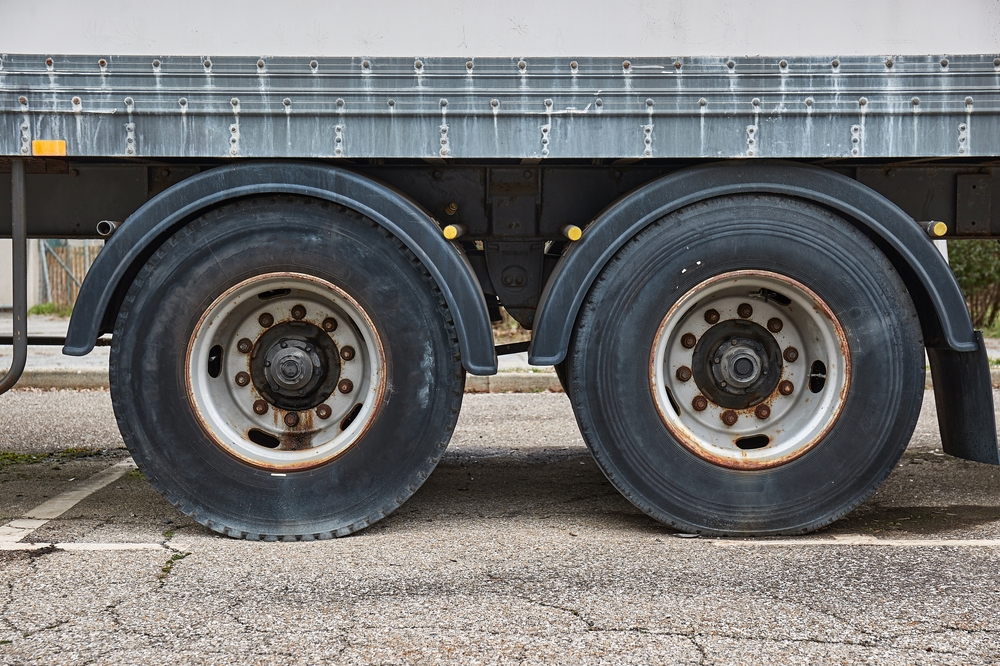
Key Takeaways for Washington Chain Law Violations
- A violation of RCW 46.37.420 may establish negligence per se (breach), but you must still prove causation and damages, and defenses remain.
- “Traction Advisory” (recommended) and “Chains Required” (mandatory) represent legally distinct requirements, though dangerous conditions during either may constitute negligence.
- All vehicles and combinations over 10,000 lbs GVWR must carry at least two extra tire chains from November 1 to April 1 on designated mountain routes, regardless of current weather.
- Washington’s chain law requirements exceed federal FMCSA regulations, and out-of-state trucking companies cannot claim federal preemption.
- Proving chain law violation claims requires evidence that chains were required, the truck lacked proper chain equipment, and the absence caused the accident.
Understanding Washington’s Chain Law for Commercial Vehicles
RCW 46.37.420 grants the Washington State Patrol authority to require tire chains when snow, ice, or other conditions render highways unsafe. When the Washington State Patrol posts “Chains Required” signs or activates electronic message boards, truck drivers must chain up immediately at the next available chain-up area.
Carry Requirements and Season
All vehicles and combinations over 10,000 lbs gross vehicle weight rating (GVWR) must carry at least two extra tire chains from November 1 to April 1 on designated chain routes under WAC 204-24-050. Carrying is required even when chaining up is not yet mandated by signage. The carry requirement applies only on specified mountain routes as published by WSDOT, including I-90 from North Bend to Ellensburg, SR-2 Stevens Pass, U.S. 12 White Pass, and other designated mountain highways.
Failure to carry chains is a separate violation even if chains are not yet required to be installed. Vehicles making local deliveries within, but not beyond, a chain control area may be exempt per WAC 204-24-050.
Chain Specifications
The law requires at least two side chains with hardened metal cross chains, so at least one cross chain contacts the road at all times. Cables are allowed if equivalent in performance to regular chains; plastic chains are not allowed. WSP may approve alternate traction devices for vehicles unable to accommodate conventional chains.
Interaction With Federal Rules
Washington’s requirements exceed federal regulations. While FMCSA regulations address chain construction, they do not mandate specific usage in winter conditions. Out-of-state trucking companies cannot claim federal preemption—state law controls.
Designated Chain-Up Points
Designated chain-up points under WAC 204-24-050 provide safe locations for installing chains. Major locations include Issaquah, North Bend, and Hyak on I-90 for Snoqualmie Pass; Sultan and Skykomish on Highway 2 for Stevens Pass; and designated points near Packwood for White Pass. Refer to WSDOT’s commercial vehicle chain information for the most current list.
“Traction Advisory” vs “Chains Required”: A Critical Legal Distinction
Washington uses two advisory levels with different legal consequences.
“Traction Advisory” appears on yellow diamond signs or electronic message boards, meaning winter conditions exist and chains are recommended but not legally mandatory for all vehicles. However, commercial vehicles may still need to chain under WSDOT/WSP directives or based on actual traction conditions. Failure to chain during dangerous conditions may constitute ordinary negligence.
“Chains Required” appears on white rectangular signs with specific vehicle class designations, meaning all designated vehicles must have chains installed and in use. When displayed, drivers must chain up immediately at the next available chain-up area. WSP’s Commercial Vehicle Enforcement Bureau enforces these directives by turning back non-compliant trucks or issuing citations.
This distinction matters for negligence per se versus ordinary negligence. “Chains Required” violations may support negligence per se claims if all elements are proven. Weather data, WSDOT road condition reports, and WSP enforcement records become critical evidence.
Negligence Per Se: How Chain Law Violations May Prove Breach of Duty
Negligence per se is a doctrine that treats a statute violation as a breach of duty when specific elements are met. Four elements must be proven: the defendant violated a statute, the plaintiff belongs to the protected class, the injury is the type the statute was designed to prevent, and the violation was a proximate cause.
RCW 46.37.420 may satisfy these requirements in appropriate cases. The statute protects public safety on winter roads. All road users belong to the protected class. Slide-offs, jackknifes, inability to stop, and loss of control are the harms the statute aims to prevent.
When a truck driver violates “Chains Required” directives and all four elements are proven, breach of duty may be established through negligence per se. The plaintiff must still prove causation (that the lack of chains proximately caused the crash) and damages. Negligence per se in Washington law is not absolute; defenses such as signage errors, chain failure, or supervening causation are available.
A violation does not automatically prove liability. Courts evaluate whether the statutory violation satisfies negligence per se requirements and whether causation is established.
Evidence Required to Prove Chain Law Violations
To prevail, you must show that chains were required or warranted, the truck lacked proper chains, and that absence caused the crash. Washington State Patrol collision reports and citations provide the most persuasive evidence. Multiple independent sources usually converge to establish both the requirement to chain and the failure to comply.
Official Records
WSP reports document conditions and whether chain requirements were in effect. Citations issued for RCW 46.37.420 violations or failure to carry required chains create powerful evidence.
Road and Weather Data
WSDOT pass condition logs document when “Chains Required” or “Traction Advisory” was in effect, road surface conditions, and weather patterns. National Weather Service records, WSDOT camera footage, and WSP radio logs establish when “Chains Required” was activated.
Visual and Physical Evidence
Photographic and video evidence is critical. Photos of the truck post-accident showing no chains, pictures of signage, and dashcam footage all prove the violation. Experts can distinguish chained from unchained tracks; chained tires leave distinctive cross-chain patterns. Witness statements from other motorists provide comparative evidence.
Expert and Company Records
Expert testimony can verify that chains were required and would have prevented the accident. Meteorologists testify about conditions, trucking safety experts establish industry standards, and accident reconstructionists demonstrate that proper chains would have provided sufficient traction. Trucking company records, including chain checkout logs, pre-trip inspections, and dispatch communications, reveal whether the company provided chains and training.
Snoqualmie Pass: Washington’s Highest-Risk Chain Law Enforcement Zone
I-90 over Snoqualmie Pass is Washington’s most active chain-law enforcement zone. As the primary east-west commercial corridor between Seattle and Spokane, thousands of commercial vehicles travel this route daily. At 3,022 feet with steep grades, the pass has hazardous winter conditions.
Chain-up points at Issaquah, North Bend, and Hyak provide clear stopping locations. The Washington State Patrol maintains high-visibility enforcement. Chain-law violations on Snoqualmie often produce strong liability cases due to clear enforcement, extensive signage, and documented enforcement patterns.
WSDOT’s real-time pass conditions and cameras undercut claims that drivers lacked notice of chain requirements.
Defending Against Trucking Company Arguments
Trucking defendants raise familiar defenses in winter crashes. Some hinge on weather severity; others dispute whether chains were required or properly installed. Addressing each with road-condition data, enforcement records, photos, and expert analysis keeps the focus on preventable choices.
Weather-Only Defense
The weather-only defense claims conditions were so severe that chains would not have prevented the crash. Counter by emphasizing that chain law exists precisely for severe weather. If conditions made accidents truly unavoidable even with chains, WSP would close the road entirely. Expert testimony demonstrating that proper chains would have provided sufficient traction helps defeat this defense.
Advisory vs. Required
The “Traction Advisory not Chains Required” defense attempts to avoid negligence per se. Use WSDOT condition reports and WSP enforcement records to show that “Chains Required” was active. Even if only “Traction Advisory” was posted, argue that reasonable commercial drivers would have chained up given actual conditions.
Comparative Negligence
Comparative negligence arguments blame victims for speeding, following too closely, or having inadequate tires. Washington’s pure comparative negligence rule under RCW 4.22.005 allows recovery even when victims share fault, with damages reduced by the plaintiff’s fault percentage.
Disputes About Chains
Factual disputes about whether chains were installed or met specs challenge the premise. Counter with photos, WSP inspection reports, witness testimony, and tire mark expert analysis. If chains allegedly failed, scrutiny focuses on whether approved chains were used and whether the driver should have stopped.
Failure to Carry
The failure-to-carry defense applies when trucks lack required chains during the November 1 to April 1 period on designated routes. Failure to carry chains as mandated creates a separate violation demonstrating inadequate preparation.
The Role of Federal Motor Carrier Safety Regulations
While FMCSA regulations establish nationwide standards, Washington’s state chain law requirements create additional obligations. 49 CFR Part 393 addresses tire chain construction but does not mandate specific usage in winter conditions.
Stricter state safety rules are not preempted. RCW 46.37.420 and related carry requirements establish higher standards that apply to all commercial vehicles operating in Washington. Out-of-state carriers sometimes claim they were unfamiliar with Washington’s requirements, but this defense fails because commercial carriers bear responsibility for knowing applicable laws.
Statute of Limitations and Evidence Preservation Urgency
Washington law provides three years from the accident date to file personal injury lawsuits. However, evidence preservation requires immediate action.
Digital Records
ELD data, ECM recordings, dispatch communications, and maintenance records may be lost unless legal holds are issued quickly. Attorneys send preservation letters immediately, demanding that trucking companies preserve all potentially relevant evidence, including chain checkout logs.
Physical Conditions
Physical evidence disappears rapidly. Snow melts, roads are plowed, and signage may be adjusted. Photographs taken immediately preserve conditions that cannot be recreated later.
Witnesses and Deadlines
Witness memories fade. Other motorists who saw the truck without chains can be crucial witnesses and must be identified quickly.
Government Claims
For accidents involving government vehicles, claimants must file tort claims and wait 60 days before filing suit per RCW 4.96.020, though the three-year statute still applies.

FAQ for Washington Chain Law Violation Cases
Does a chain law violation automatically mean the trucking company is liable?
A violation of RCW 46.37.420 can establish negligence per se, which satisfies the breach element of duty, but you must still prove causation—that the absence of proper chains proximately caused your injuries. Defenses remain available.
How do you prove a truck didn’t have chains if you don’t have photos?
WSP collision reports often note whether chains were present and whether violations were cited. Witness statements can testify about the truck’s equipment. Accident reconstruction experts analyze tire marks to distinguish chained from unchained patterns. Trucking company records also provide evidence.
How fast must a driver install chains after “Chains Required” appears?
Immediately. Once WSP posts “Chains Required,” commercial drivers must install chains at once at the next available chain-up area; WSP may turn them back or cite noncompliance. Noncompliance can support negligence per se when causation and damages are proven.
Are cable chains acceptable for compliance?
Yes, if performance equals chains. The law requires at least two side chains with hardened metal cross chains, so at least one cross chain contacts the road at all times. Cables are permitted if they meet these performance standards, but plastic chains are not allowed.
What if I was also driving too fast or didn’t have chains on my car?
Washington’s pure comparative negligence rule under RCW 4.22.005 allows recovery even when you share fault, with damages reduced by your fault percentage. Commercial drivers face higher standards. Even with 30-40% comparative fault, you recover the remaining 60-70% of damages.
Taking Legal Action After Winter Truck Accidents
Winter truck accidents involving chain law violations create unique claims requiring knowledge of Washington trucking regulations and winter weather accident reconstruction.
Consult an attorney experienced with Washington chain law cases promptly. Evidence preservation letters must reach trucking companies quickly. Expert witnesses need time to analyze accident dynamics, weather conditions, and whether proper chains would have prevented the crash.
If you suffered injuries in a winter truck accident where the driver lacked required chains or failed to carry proper equipment, don’t accept explanations that weather alone caused the crash. Call Boohoff Law at (877) 999-9999 or contact us online for a free consultation. You pay no fees unless we win.
Free Consultation
We Are Here For You 24/7
Reviews
– Elissa M.
“Really pleased with Boohoff Law! Received immediate responses when I had any questions. Treated amazingly by all staff … made this process a true breeze!”
– Caitlyn M.
– Brandy K.
Related Posts
Washington’s Chain Law Requirements: When Truck Drivers’ Failure to Chain Up Becomes Negligence
Washington Vehicular Homicide and Trucking Accidents: What Families Should Know
Washington PIP Coverage Explained: Why Your Insurance Pays First (Even When It Wasn’t Your Fault)
Recovery is personal.
We’re here for you.
We’re close by. And if you can’t make it to us, we’ll meet you where you need us, at home or in the hospital.
You're better off with Boohoff.
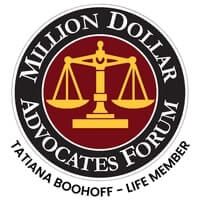

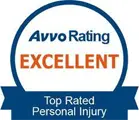

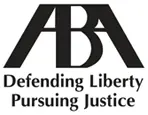
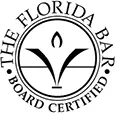
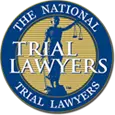
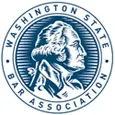



The information on this website is for general information purposes only. Nothing on this site should be taken as legal advice for any individual case or situation. This information is not intended to create, and receipt or viewing does not constitute, an attorney-client relationship.
Disclaimer: The results and testimonials presented on this website are based on the unique facts and circumstances of each case. Past results do not guarantee or predict similar outcomes in future cases. Every legal matter is different, and you should not rely on prior case results as an expectation of future performance.
available 24/7
(877) 999-9999
